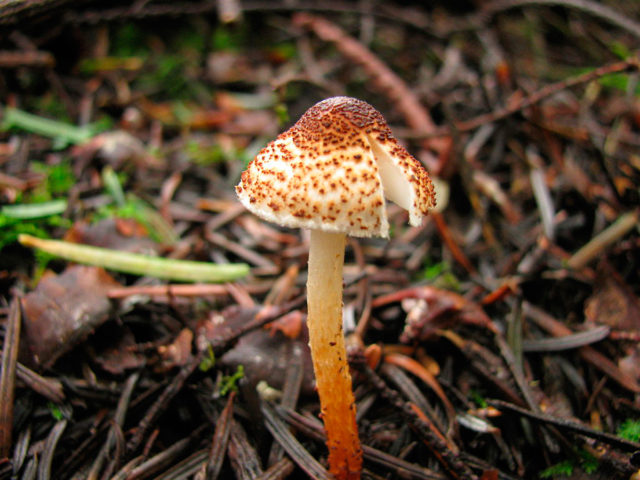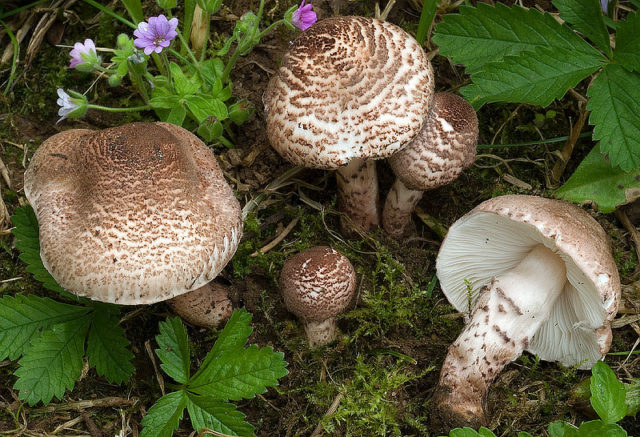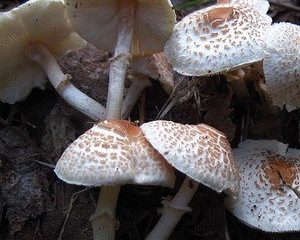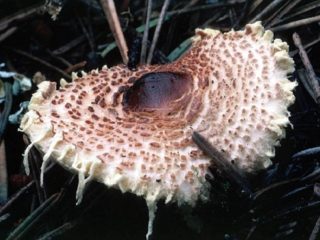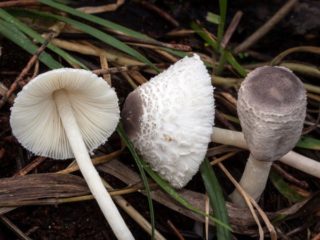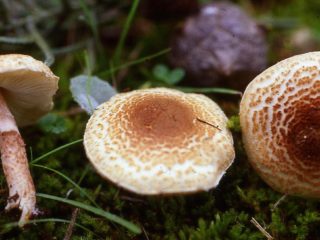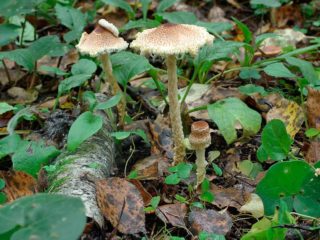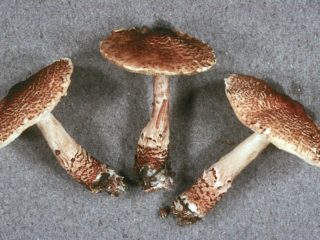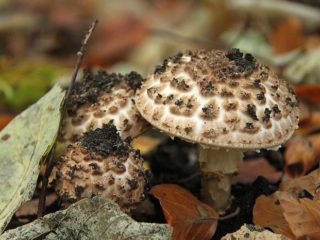Content
Chestnut Lepiota (Lepiota castanea) belongs to the umbrella mushrooms. The Latin name means "scales", which is consistent with the external characteristics of the fungus. This is one of the representatives of the Champignon family.
What chestnut lepiots look like
Mushrooms look attractive outwardly, but you should not take them in a basket - they are life-threatening.
Young umbrellas have an egg-shaped hat, on which a scaly skin of yellow, brown, chestnut color is clearly visible. As it grows, this part of the fruiting body straightens out, but the dark spot on the crown does not disappear. The skin gradually cracks, a white layer is visible under it. The caps are small - no more than 2-4 cm in diameter.
There are plates under the umbrella under the chestnut hat. They are thin, often located. After the appearance of lepiota from the ground, the plates are white, but then they become yellowish or straw. On the break, the flesh is white, in the area of the leg it is red or brown. It is fragile, with an unpleasant odor.
Ripe umbrellas have hollow cylindrical legs 5 cm high and about 0.5 cm in diameter. The color of the stem either matches the shade of the cap, or is slightly darker, especially at the widened base.
Where do chestnut lepiots grow
Judging by the name, it can be assumed that you need to look for lepiots under the chestnuts. This is a wrong judgment. You can meet a chestnut umbrella under deciduous trees, although it is also found in mixed forests. It can often be seen in the garden, ditches, along the roadside.
Umbrellas grow in Russia almost everywhere, except for the Far North. The growth of fruiting bodies begins with the appearance of grass in early spring. Fruiting lasts all summer, autumn, up to frost.
She has a hat almost the same in shape, only its color can be grayish-brown, brown-cream with a cherry tint. The edges of the cap are pubescent, the dark scales are arranged in circles.
The pulp is white, near the leg of a creamy shade, below it is cherry. Young lepiots are red-brown and smell like fruit, but as they mature, the stench spreads from them.
Is it possible to eat chestnut lepiots
Chestnut lepiota belongs to poisonous mushrooms, therefore it is not eaten. It contains amatoxins that are hazardous to health.
Poisoning symptoms
The first signs of umbrella mushroom poisoning are:
- nausea;
- vomiting;
- diarrhea.
Symptoms begin to appear after two hours. We urgently need to call an ambulance.
First aid for poisoning
Until the doctors arrive, you should:
- put the victim to bed;
- give a large amount of water to drink in small sips;
- then induce vomiting.
Conclusion
Chestnut Lepiota is a deadly poisonous mushroom, so you need to bypass it. But this does not mean that they should be knocked down or trampled. There is nothing useless in nature.
